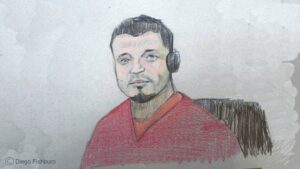
Renowned futurist and computer scientist Ray Kurzweil has once again stirred the pot of technological speculation by asserting that humanity will reach the singularity within the next 20 years. This bold prediction, which comes amid rapid advancements in artificial intelligence, suggests a future where human and machine intelligence will merge, fundamentally transforming our world.
Kurzweil’s forecast, outlined in his latest book, The Singularity is Nearer, builds on his longstanding belief that the singularity—a concept borrowed from quantum physics—will occur by the mid-21st century. He argues that this convergence will enhance human intelligence a millionfold, driven by innovations such as nanobots that integrate seamlessly with our biological systems.
The Evolution of Kurzweil’s Predictions
Kurzweil is no stranger to making audacious predictions. In 1999, he posited that artificial general intelligence (AGI) would be achieved once technology could perform a trillion calculations per second, a milestone he anticipated by 2029. While initially met with skepticism, the rapid pace of AI development has lent increasing credibility to his timeline.
In his book, Kurzweil elaborates on how non-invasive brain interfaces could exponentially boost human cognitive abilities. “We’re going to be a combination of our natural intelligence and our cybernetic intelligence,” he told The Guardian. “We are going to expand intelligence a millionfold by 2045, and it is going to deepen our awareness and consciousness.”
Expert Opinions and Philosophical Implications
Kurzweil’s vision is shared by other thinkers in the field. In July 2024, Oxford scholars Marcus du Sautoy and Nick Bostrom discussed the potential and pitfalls of a future intertwined with AI. Both agree that a synthesis of human and machine intelligence seems inevitable, with Sautoy remarking, “I think that we are headed toward a hybrid future.”
This potential “Brave New World” raises numerous questions about the socio-economic and ethical implications of such a transformation. Concerns range from job displacement to the philosophical redefinition of what it means to be human. Kurzweil, however, remains optimistic, suggesting that concepts like Universal Basic Income will become essential to navigate these changes.
Technological Utopias or Dystopias?
While Kurzweil’s predictions paint a picture of a technology-driven utopia, history reminds us of the unpredictability of such forecasts. The comparison to Back to the Future Part II‘s vision of flying cars serves as a cautionary tale of how futuristic dreams can sometimes falter.
Nevertheless, Kurzweil’s assertion that we are approaching a pivotal moment in technological history is difficult to dismiss. “In the early 2030s we can expect to reach longevity escape velocity where every year of life we lose through aging we get back from scientific progress,” he stated, hinting at the tantalizing possibility of extending human lifespan significantly.
The Road Ahead
As the predicted dates for these technological milestones draw closer, the world watches with a mix of anticipation and apprehension. The implications of Kurzweil’s predictions are profound, potentially reshaping every facet of human life, from healthcare to employment and beyond.
While the future remains uncertain, the dialogue sparked by Kurzweil and his contemporaries ensures that humanity is at least contemplating the possibilities. As we stand on the brink of potential singularity, the conversation about our technological destiny continues to evolve.







